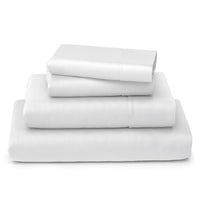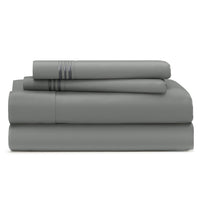
Wool Dryer Balls Are Safer Than Most Dryer Sheets
Nothing is better than fresh, clean, and soft laundry straight out of the dryer—especially laundry that smells heavenly.
Doing laundry has probably become second nature to you. Wash, throw your laundry in the dryer with a dryer sheet, repeat.
When it comes to drying laundry, opting for using single-use dryer sheets to make clothes feel soft and fresh is common. However, have you ever wondered or taken a minute to think about what those dryer sheets consist of? What they can do to you, your health, and your dryer? You might be surprised.
Read on to learn more about dryer sheets and to be introduced to a much safer alternative.
Dryer Sheets vs. Wool Dryer Balls

The biggest mistake you’re doing while doing laundry isn’t mixing colors and whites. It’s using dryer sheets. It’s time to ditch the dryer sheets and make the switch to a safer alternative that does the same job, but in a better and safer fashion—wool dryer balls!
Here are four reasons why:
Ingredients
Did you know that manufacturers are not required to disclose all the ingredients they use to make dryer sheets on their labels? Even brands that claim they’re “green” or “free and clear.”
The problem with most dryer sheets on the market is that they contain harsh chemicals and dyes that can be extremely harmful. You could experience both short- and long-term effects on you and your family’s health (and not to mention take a toll on your dryer).*
Good news though! Wool dryer balls are completely chemical-free. Instead of coating your laundry in questionable ingredients (that in turn can coat your skin and enter your bloodstream) and making the fabrics less productive, dryer balls mechanically soften fabrics, prevent static, and keep clothes wrinkle-free.
Fragrance
While dryer sheets can make your laundry smell great, it is at a risk. Popular dryer sheet brands coat their products with a ton of artificial fragrances. This can seriously affect those particularly with nose and skin sensitivities. Artificial fragrances used in dryer sheets can even cause health issues like migraines and asthma attacks.*
Using wool dryer balls does not mean sacrificing the fresh-laundry scent! Rather, it gives you endless options for scents. If you want to add a little something extra to your laundry, simply add a couple of drops of your favorite essential oil to your wool dryer balls, and voila! Amazing smelling laundry without the fear of questionable artificial fragrances.
VOC’s
Volatile Organic Compounds, or VOCs, are a major concern in terms of dryer sheets. VOCs are gases that get released into the air while the dryer sheet is being used. Many VOCs are carcinogenic or can be linked to respiratory illnesses. A study conducted by The Environmental Protection Agency (EPA) proved that popular brands were found to emit VOCs from dryer vents.*
Since wool dryer balls are made from 100% organic sheep’s wool and contain no chemicals at all, no need to worry about VOCs!
Carbon Footprint & Air Pollution Concerns
Dryer sheets are not only not safe for you and your health, but they’re not safe for the environment and the world around you either. Here's why:
Dryer sheets are single-use, which means you have to use a new dryer sheet every time you dry a load of laundry and throw away the used ones. And, due to their makeup, they can’t be recycled. Seeing as the average American family does laundry 8 to 10 a week, that is a lot of unnecessary waste (and unnecessary costs).
The fragrance dryer sheets release chemicals into the environment through your dryer vents, affecting the air all around you. One of the main chemicals in dryer sheets is quaternary ammonium compounds (QACS) and it is known for causing various health issues. Not only that, QACS don’t biodegrade easily and can be toxic to aquatic life.* This is concerning since these products go directly into our water systems.
The best dryer balls are handcrafted from organic materials, typically sheep’s wool. The added benefit of using reusable and mindful wool dryer balls is that they are a zero-waste solution to doing laundry. Therefore, you’re not only saving money and time but also doing your part in helping decrease waste.
How to Use Wool Dryer Balls

To use, simply place the set of dryer balls in the dryer with your wet, clean laundry. You can even add a couple of drops of your favorite essential oils to the wool dryer balls for a subtle scent. When not in use, you can leave them in the dryer or place them in a jar.
If your laundry load is on the small or medium size, you only need to toss in 3 to 4 wool dryer balls. If you’re drying a large load, we suggest using 5 or 6.

Ready to make the switch? Cosy House Collection’s extra-large Wool Dryer Balls are the best way to soften and freshen your laundry. Sourced from humanely sheared New Zealand sheep, our unscented wool dryer balls are hand-felted and are free of any dyes, chemicals, and artificial fragrances. What’s even better is that they last for up 3 years! This means no more having to run to the store when you’re low on dryer sheets.
Resources
Kessler R. (2011). Dryer vents: an overlooked source of pollution?. Environmental health perspectives, 119(11), A474–A475. https://doi.org/10.1289/ehp.119-a474a
Steinemann A. (2016). Health and societal effects from exposure to fragranced consumer products. Preventive medicine reports, 5, 45–47. https://doi.org/10.1016/j.pmedr.2016.11.011
Steinemann, A.C., Gallagher, L.G., Davis, A.L. et al. Chemical emissions from residential dryer vents during use of fragranced laundry products. Air Qual Atmos Health 6, 151–156 (2013). https://doi.org/10.1007/s11869-011-0156-1
Zhang, C., Cui, F., Zeng, G.-ming, Jiang, M., Yang, Z.-zhu, Yu, Z.-gang, Zhu, M.-ying, & Shen, L.-qing. (2015). Quaternary ammonium compounds (qacs): A review on occurrence, fate, and toxicity in the environment. Science of The Total Environment, 518-519, 352–362. https://doi.org/10.1016/j.scitotenv.2015.03.007


